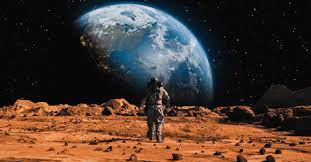Introduction
The exploration of deep space has captivated human curiosity for centuries, and technological advancements have played a pivotal role in bringing the wonders of the cosmos closer to us. In recent times, the influence of technology on deep space photography has been nothing short of revolutionary. This article delves into the transformative impact of technological innovations on capturing and sharing awe-inspiring images from the depths of the universe.
Advanced Telescopes and Imaging Sensors
The foundation of deep space photography lies in the development of advanced telescopes equipped with cutting-edge imaging sensors. High-resolution cameras and sensors enable astronomers and astrophotographers to capture detailed images of distant galaxies, nebulae, and celestial objects. Technological breakthroughs in sensor technology contribute to sharper and more intricate depictions of the cosmos.
Adaptive Optics for Clearer Images
The challenges posed by Earth’s atmosphere, such as turbulence and distortion, can impact the clarity of deep space images. The integration of adaptive optics technology addresses these issues. By continuously adjusting the optics in real-time, adaptive optics systems compensate for atmospheric disturbances, resulting in clearer and more detailed photographs of celestial bodies.
Remote Observatories and Robotic Telescopes
Advancements in technology have led to the establishment of remote observatories and robotic telescopes. These autonomous systems, controlled remotely or through automated scheduling, allow astronomers to capture images from optimal locations with minimal light pollution and atmospheric interference. The use of robotic telescopes enhances the efficiency and accessibility of deep space photography.
Spectroscopy for Analyzing Celestial Composition
Technological innovations extend beyond capturing images to analyzing the composition of celestial objects. Spectroscopy, enabled by advanced sensors and spectrographs, allows astronomers to break down the light emitted or reflected by stars and galaxies. This detailed analysis provides insights into the chemical composition, temperature, and other characteristics of distant cosmic entities.
Image Stacking and Processing Algorithms
Deep space photography often involves capturing faint signals over extended periods. Image stacking, supported by sophisticated processing algorithms, combines multiple exposures to enhance signal-to-noise ratios. This technique reveals subtle details in images that would be challenging to capture in a single exposure. Technological advancements in processing algorithms contribute to refining and optimizing the final visual output.
Space Telescopes and Orbiting Observatories
The deployment of space telescopes and orbiting observatories represents a monumental leap in deep space imaging. Instruments like the Hubble Space Telescope, equipped with state-of-the-art cameras and detectors, orbit above Earth’s atmosphere, eliminating atmospheric distortions. These space-based platforms provide unparalleled clarity in capturing breathtaking images of distant galaxies and nebulae.
Integration of Artificial Intelligence in Image Analysis
Artificial intelligence (AI) has found its way into deep space photography through image analysis applications. Machine learning algorithms can identify patterns, structures, and anomalies in vast datasets of astronomical images. AI-driven analysis aids astronomers in efficiently categorizing and interpreting the wealth of information captured in deep space photographs.
Virtual Reality and Immersive Experiences
Technology has transformed how we experience deep space photography. Virtual reality (VR) and immersive experiences allow individuals to explore the cosmos virtually. Through VR platforms, users can navigate through three-dimensional representations of distant galaxies, providing a sense of being present in the vastness of space captured by deep space imagery.
Public Participation in Citizen Science Projects
Advancements in technology have democratized deep space exploration, allowing the public to actively participate in scientific endeavors. Citizen science projects, facilitated by online platforms, engage enthusiasts in the analysis of astronomical data and the discovery of new celestial objects. This collaborative approach harnesses the collective power of technology and human curiosity.
Real-Time Data Transmission for Timely Discoveries
The influence of tech on deep space photography extends to real-time data transmission. Space missions equipped with advanced imaging systems can transmit data back to Earth in real-time. This capability enables astronomers to make timely discoveries, respond to unexpected phenomena, and adapt observation strategies based on the immediate feedback received from deep space probes and telescopes.
Conclusion
The marriage of technology and deep space photography has ushered in a new era of exploration and understanding. From advanced sensors and adaptive optics to artificial intelligence and immersive experiences, each technological innovation contributes to unraveling the mysteries of the universe. As technology continues to evolve, the influence on deep space photography promises to reveal even more breathtaking vistas, fostering a deeper connection between humanity and the cosmic wonders that unfold beyond our celestial neighborhood.
